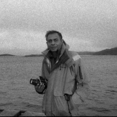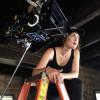Search the Community
Showing results for tags 'KODAK'.
-
Newcomers tend to ask if a certain film stock will over or underexpose in a specific camera they have just purchased when shooting in the automatic exposure mode. Has anyone actually gotten negative footage that was either too over-exposed or too under-exposed when shooting in the automatic mode, and of course assuming there was adequate light with which to shoot?
- 4 replies
-
- Kodak
- Vision super-8mm film stock
-
(and 2 more)
Tagged with:
-
Hi everyone, greetings! just shot an experimental short, a motivational short film on Running on S16mm. you can have a look at the link below. thanks n regards Prashantt cinematographer Mumbai
-
Hello - I'm in the process of finishing up a documentary that I shot last year. I'm almost at picture lock and it's time for me to start thinking about color correcting and grading my project. My film was shot on two different film stocks, Kodak's 50D 7203 and 500T 7219. Both films were processed normal and were given a flat pass telecine on a Baselight system to HD ProRes422HQ files. I've tried some correction tests with this footage and I am having a devil of a time getting everything to balance out. The transfer is obviously lacking in contrast, and when I try to correct that it knocks the color and saturation all out of whack. According to the scopes I am using (inside color and FCP) I have to drop the blacks way down and stretch the whites and the midtones way up in order for the spread to register correctly. In fact, it seems to take too much correction to add contrast to my footage. Is this the case? Am I doing to do much? I'm turning to you guys for some help and advice. Right now I'm not worried about grading the footage - just correcting it so it doesn't look flat. Below are some screen grabs from my project which should give you a good idea of what I'm dealing with. If you have any suggestions or comments please feel free to share them with me. I'm also happy to provide more screen grabs or answer any questions if you think it will help. Here's some shots from the 50D footage, all take in full sun around f16. http://www.flickr.com/photos/25291579@N00/9007383279/ http://www.flickr.com/photos/25291579@N00/9007384281/ Here's some shots for the 500T footage. Two were shot under fluorescent light at around f2, the last was shot using a practical tungsten fixture at around f4. http://www.flickr.com/photos/25291579@N00/9007385761/ http://www.flickr.com/photos/25291579@N00/9008568480/ http://www.flickr.com/photos/25291579@N00/9007388485/ I should mention that these screen grabs appear much darker than my actual footage. The blacks are not as strong in the 7219 footage as shown here, but they are very strong in the 7203 footage and these stills make them look even darker. I should also mention that this project will most likely be corrected using Apple's Color. Thanks in advance for your help, Aaron Martin
-
- color correction
- flat pass
-
(and 6 more)
Tagged with:
-
Kodak Goes Behind-the-Scenes With Acclaimed Cinematographers at Cine Gear Expo; Eric Alan Edwards, Giles Nuttgens and Rachel Morrison Headline Panels LOS ANGELES, May 29, 2013 — Kodak will host two discussions with acclaimed cinematographers at this year’s Cine Gear Expo on the Paramount Lot in Los Angeles. On Friday, May 31, at 5:15 p.m., Kodak will sit down with award-winning cinematographer Giles Nuttgens, BSC for a conversation in the Paramount Theater. On Saturday, June 1, at 11:45 a.m., the “Sundance in Summer” panel will feature Eric Alan Edwards (Lovelace) and Rachel Morrison (Fruitvale Station) in The Sherry Lansing Theater. In a candid conversation, Nuttgens will reveal the thinking behind his extensive body of work -- including the imagery, technology, career choices, and his collaborations. The seminar will offer a glimpse into the mind of one of today's more innovative artists. Nuttgens shot the recently released What Maisie Knew with the directing team Scott McGehee and David Siegel, and Midnight’s Children, based on the best-selling Salman Rushdie novel. Nuttgens’ extensive feature resume also includes Mehta’s elemental trilogy Fire, Earth and Water, which received a 2007 Oscar® nomination for Best Foreign Language Film and earned Nuttgens the 2006 GENIE Award for Best Cinematography. Nuttgens first worked with McGehee and Siegel on The Deep End, a film which earned him the 2001 Sundance Film Festival Award for Best Cinematography, and a nomination in the same category at the 2002 Independent Spirit Awards. His next films include the upcoming features Young Ones and God Help the Girl. Both Edwards and Morrison recently had movies that were stand outs at the Sundance Film Festival. This panel conversation will delve into their creative and budgetary considerations made prior to and during production. The cinematographers will also give the audience behind-the-scenes insight on the collaborations with their directors – Ryan Coogler who took his first turn at the helm on Fruitvale Station; and the dual visionary team on Lovelace comprised of Oscar®-winning director Rob Epstein and Emmy®-nominated Jeffrey Friedman, both with documentary backgrounds. Edwards’ film Lovelace is the story of adult film legend Linda Lovelace, who starred in the 1972 film Deep Throat. The film will hit cinema screens in August. Edwards received an Indie Spirit Award nomination for My Own Private Idaho, and has an eclectic list of credits including Gus Van Sant’s Even Cowgirls Get the Blues, Judd Apatow’s Knocked Up, David Dobkin’s The Change-Up, and the upcoming Delivery Man from director Ken Scott. Morrison lensed Fruitvale Station, which was the winner of both the Audience Award and Grand Jury Prize at the 2013 Sundance Film Festival. Based on real events, the film follows Oscar Grant on the final day of 2008, and his untimely death New Year’s Day at the hands of a transit police officer in Oakland, Calif. The film will be released by The Weinstein Co. on July 26. Morrison’s credits include Palo Alto, CA; and the upcoming thriller The Harvest, among others. Morrison will receive the Kodak Vision Award at the 2013 Women in Film Crystal + Lucy Awards® on June 12. The panel is free with admission to Cine Gear Expo. Advanced registration for the Expo can be done at www.cinegearexpo.com. The website also includes directions and additional information. To learn more about Kodak, visit www.kodak.com/go/motion, or follow Kodak on Facebook at http://www.facebook.com/KodakMotionPictureFilm and Twitter (@Kodak_ShootFilm). (Participants subject to availability.) # About Kodak’s Entertainment Imaging Business Kodak’s Entertainment Imaging business is the world leader in providing motion picture film and imaging products, services, and technology for the professional motion picture and exhibition industries. For more information, visit www.kodak.com/go/motion. Follow us on Facebook (facebook.com/KodakMotionPictureFilm), Twitter (@Kodak_ShootFilm), and YouTube (youtube.com/KodakShootFilm).
-
Kodak Appoints Christian Richter to Film Lab and Studio Relationship Manager ROCHESTER, NY (May 14, 2013) – As part of Kodak’s ongoing efforts to support the motion picture film infrastructure, the company has appointed Christian Richter to the newly created role of film lab and studio relationship manager, effective immediately. Richter will be responsible for developing and managing strategies to optimize the workflow between studios, filmmakers, laboratories and post-production facilities. He will report to Andrew Evenski, Kodak’s president and general manager of the company’s Entertainment Imaging division. “There is a growing concern that the changes occurring in the industry will be detrimental to the motion picture film infrastructure, and we want to alleviate that concern,” says Evenski. “There is a thriving, global lab network and many filmmakers are choosing film. Christian has more than 15 years of extensive, international experience to contribute to this new role. He will liaise with our customers and promote the options for shooting anywhere in the world, utilizing the high-quality film system in place to support those productions.” Since joining Kodak in 1997, Richter has worked solely in the Entertainment Imaging division, fulfilling roles on an international scale. His responsibilities have ranged from managing the business unit’s initiatives for students, film schools and emerging filmmakers in Germany, to general management of Kodak’s Cinelabs in Dubai and Bulgaria. After developing broad international sales experience over several years, he became an integral part of Kodak’s product development and innovation advocacy teams, working with R&D scientists to drive product quality and growth. His business acumen includes a skill set for overseeing people, projects, products and industry partnerships. Richter is currently the business manager for Europe, the Middle East and Africa, a title he’ll maintain as he embarks on his new responsibilities. Previously, he was the Business Development Manager for Western Europe. “I want to make it as easy as possible for filmmakers to shoot on film, regardless of where they are shooting around the globe,” says Richter. “Filmmakers do not have to shy away from using film because of uncertainties around the availability of laboratory services. That infrastructure is in place. At the same time it will be exciting to work with the lab community, ensuring their services are well promoted within the industry.” # About Kodak’s Entertainment Imaging Business Kodak’s Entertainment Imaging business is the world leader in providing motion picture film and imaging products, services, and technology for the professional motion picture and exhibition industries. For more information, visit www.kodak.com/go/motion. Follow us on Facebook (facebook.com/KodakMotionPictureFilm), Twitter (@Kodak_ShootFilm), and YouTube (youtube.com/KodakShootFilm).
- 1 reply
-
- Kodak
- motion picture film
-
(and 3 more)
Tagged with:
-
Hey guys, anyone know the difference between the 200T and the 250D? I understand the 250D is for daylight. But for the 200T, its shot alot in daylight, so whats the advantage - AND its tungsten balanced....so it would make sense to shoot at night...with slow speed??? Doesnt make sense. Anyway, hopefully you guys will be able to explain. And please dumb down the technical lingo a tad lol Im not a cinematographer - just someone who wants to learn. I do storyboards, and i might direct in the future and knowing this may come in handy. Thanks! Also, how far can I underexpose with the 200T?? And the 250D? I know with 500T you can go under to EI 1600. But what about these faster stocks?
-
I'm a film student currently in pre-production for my first 16mm film. We have three rolls of film stock, and can choose from 50T, 250D, 250T and 500D We have three different aesthetics: One indoor scene in a swimming pool, where we will hopefully have 3/4 natural light and I'm hoping we will be able to use 250D Kodak stock, using only natural light. Two outdoor scenes (although in the English countryside, in May) in one of which we are hoping to acheieve a look similar to 70s photographs of Californian swimming pools, such as http://www.latimes.com/features/home/la-hm-backyard-oasis-photos,0,7657842.photogallery?index=la-hm-backyard-oasis-photos-002 while in the other, we are hoping to acheieve a colder 90s style such as this film demonstrates: http://vimeopro.com/yvonlambert/sallatykka/video/40155357 Sorry for the very long post, but does anybody maybe have some advice on which film stock to use? We are using the Arri SR3 and have access to 'basic filters' Thanks!
-
To all those film stock experts! I have just started learning about film stock at film school BUT we are shooting our first short films soon and need some extra help! I am planning to shoot my film outside at an oval - Potentially simulating sunset for most of the shoot and I was wondering what the best film stock to use would be! I really want to make the most of sunset and dusk, creating beautiful silhouettes etc. My teacher is saying go with 500T, but it could be grainy when shooting later. What do others think? Thanks in advance, Josie
-
ROCHESTER, NY (February 28, 2013) - John Bailey, ASC, a renowned cinematographer known for his artistic contributions to cinema, will spearhead a panel of judges for the 2013 Kodak student scholarship program. This international competition acknowledges student filmmakers who demonstrate exemplary filmmaking skills and creativity at the undergraduate and graduate levels. The deadline for entries is May 17. Accredited film schools around the world may nominate up to two students for consideration for the KODAK Student Scholarship Award, and one cinematography student for the KODAK Student Cinematography Scholarship Award. The cinematography student nominee may also be nominated for the KODAK Student Scholarship Award. Nomination forms can be downloaded at www.kodak.com/go/scholarships. Bailey has a long list of memorable feature film credits including American Gigolo, Ordinary People, The Big Chill, Silverado, The Accidental Tourist, Groundhog Day, In the Line of Fire, As Good as it Gets, Incident at Loch Ness, Brief Interviews With Hideous Men, The Greatest, Country Strong, When in Rome and most recently Big Miracle. He also blogs for the American Society of Cinematographers - John's Bailiwick - on a range of topics that affect the art and craft of filmmaking. "John's experience and mentorship skills make a huge contribution to this scholarship process," says Kodak's Johanna Gravelle. "Students from around the world will receive feedback from him to assist in their efforts to succeed in filmmaking. We are extremely grateful to John for his ongoing commitment to this program and to sharing his knowledge with the next generation." Kodak, in collaboration with the University Film & Video Foundation (UFVF), holds this annual scholarship to encourage students pursuing a career in filmmaking. As part of the competition, the judges will review sample reels, as well as evaluate the students' faculty recommendations and academic achievements. The following prizes will be awarded to the finalists and announced in August: KODAK Student Scholarship Award: * Gold: $4,000 tuition scholarship and $5,000 Kodak motion picture film grant * Silver: $3,000 tuition scholarship and $4,000 Kodak motion picture film grant * Bronze: $2,000 tuition scholarship and $3,000 Kodak motion picture film grant KODAK Student Cinematography Scholarship Award: * First Place: $3,000 tuition scholarship and $5,000 Kodak motion picture film grant * Honorable Mention: $1,500 tuition scholarship and $3,000 Kodak motion picture film grant Since 1991, Kodak has been supporting future filmmakers and encouraging excellence in the field of motion picture education. The company's ongoing efforts include a range of opportunities that students and educators can use to enrich their knowledge of the art and craft of filmmaking, including educational materials and discounts, in addition to sponsorship of film festivals, awards, seminars and student showcases that raise awareness about emerging talent. For more information, visit www.kodak.com/go/education.
-
- Kodak
- Call for Entries
-
(and 3 more)
Tagged with:
-
Finally finished writing my article after several months of research and tests. I'm putting it out there, so if anybody in the future is interested they can learn everything they need from this article to get them going. Article Includes: - The film advantages and disadvantages. - Development times. - Procedures. - Workarounds. And much more information. Thanks https://republicphoto.squarespace.com/s/ECN-DEV4.pdf
-
The 2013 Academy Award® best picture nominees include six movies that were shot on Kodak film: Argo, Lincoln, Silver Linings Playbook, Django Unchained, Beasts of the Southern Wild, and Les Miserable. In the 84-year history of Oscar®, no Academy Award®-winning best picture has ever been made without motion picture film. "We congratulate all of the 2013 nominees for their remarkable achievements,” says Andrew Evenski, president and general manager of Kodak’s Entertainment and Commercial Films Group. “We are honored that so many talented filmmakers continue to choose Kodak technology to tell their stories and create extraordinary images.” Movies made on Kodak film received a total of 56 nominations. In the four acting categories, an overwhelming majority (16 of 20) of the nominated performances were captured on motion picture film. Additionally, three of the five nominees for best cinematography relied on Kodak film to create their compelling imagery, as did three of the five directors acknowledged in their category. Evenski also notes that Kodak is still making billions of feet of film. “Many of those reels will be loaded into cameras that are capturing movies that will contend for Academy Awards in 2014.” Kodak’s Entertainment Imaging Division is the world-class leader in providing film, digital and hybrid motion imaging products, services, and technology for the professional motion picture and exhibition industries. For more information, visit www.kodak.com/go/motion.
-
hello everyone, I'm a final year cinematography student of ftit, chennai, tamilnadu. Within a month, I'm going to do my diploma film, the academic exercise.My director wants a blue tone overall the movie. so somebody give me suggestions to achieve it since i'm a budding cinematographer. Herewith I'm attaching all the equipments i would be provided : Arriflex III, 500T (2 nos), 200T (4 nos), lenses- 24mm-290mm zoom, 24mm, 35mm, 50mm, 85mm, light- 1kw, 2kw, 5kw. I know many methods would be available like using filters and all, but i would like to know the effective method that would be apt for the mentioned requirements. By the way, the diploma genre is a thriller. Regards Kirubanidhi
-
Looks like Kodak wants us to get excited. Here's a video of the assembly line for 50D.
-
Hi Cinematography.com people... I've just released a director-cinematographer 1st promo, shot with no budget other than stock, developing and telecine and would love some feedback if you had a few minutes. The idea was to create a mood and tone rather than a certain narrative. https://vimeo.com/54611682 H.Grimace "Lands of Gold and Green" With kind thanks, Ash (Ashley Michael Briggs).
-
There doesn't seem to be much experience-based info floating around about 5230 500T... I'm just curious if anyone here has shot this this stock and can comment on it's look, grain, and the result that push/pull has on contrast, color, and grain. Anyone done full or partial skip bleach with it? Any other notables? I'm beginning to evaluate stocks for a project, and I'm wondering if I can get significantly different looks by mixing '30 with 5219 and playing with processing, since I'd need an ASA 500 stock for the entire project. Also, 5230 doesn't seem to bear the Vision label... is this a DI-minded stock or something else? Cheers,
-
Can someone tell me how vision3 and vision2 differ? Also what would you consider the nicest daylight stock? I can't find any decent hd examples of vision3 50d, could someone please link a few?
-
ROCHESTER, NY (December 12, 2012) – Kodak is making its KODAK VISION3 50D Color Negative Film 7203 available in the Super 8 mm format. This fine-grained, daylight-balanced stock will be available in January 2013, giving filmmakers more options and flexibility for shooting on location. KODAK VISION3 50D film was introduced last year in the 35mm and 16mm formats. It is a low-speed color negative optimized for capturing images in natural or simulated daylight conditions. The VISION3 Film imaging technology incorporated into the stock makes it the world’s finest grain negative with extended highlight latitude – as much as two stops of additional overexposure – as well as better signal-to-noise performance, especially in over- and under-exposure. It also offers improved color consistency over the entire exposure range. These features provide filmmakers with the ability to shoot challenging high-contrast exteriors, and follow the action into bright highlight scenes without loss of image discrimination. “There are a wide range of Super 8 users around the globe, and this gives them another stock for their toolbox,” says Kodak’s Mike Ryan, director of film technology for the Entertainment Imaging Division. “Now filmmakers turning to the small gauge format can take advantage of the finest grain motion picture technology on the market to craft the distinctive look they desire from a film captured image.” The ability to render images full of color and detail over an extended exposure range through more efficient light utilization also produces cleaner film-to-digital transfers, bringing benefits to the post production process. This enables digital dodging and burning in post to bring out highlight detail and the extraction of additional information from the shadows. With this addition to the Kodak Super 8 film portfolio, filmmakers can choose from three color negatives ranging in speeds from EI 50 to 500, or the KODAK TRI-X Black & White Reversal Film 7266. For more information, visit www.kodak.com/go/motion. Follow Kodak on Facebook (www.facebook.com/KodakMotionPictureFilm), Twitter (@Kodak_ShootFilm) and YouTube (www.youtube.com/KodakShootFilm).
-
Hello, just got a 400' reel of 16mm film, Kodak Vision 500T. On the back of the can it says Copyright 1988, so I guess it was made in 1988. Therefore it is 24 years old now. Wow! It sealed around the can with yellow tape, I'm not sure if it's original. Can I shoot it?
- 12 replies
-
- kodak
- vision 500t
-
(and 2 more)
Tagged with:
-
Hey everyone. I was recently given 10,000 ft of 30 year old 35mm film dated back to 1982. The stocks are Kodak 5247 100T and Kodak 5293 200T. The person who gave them to me was given them by the AD from The Godfather, claiming these were short ends recanned from 1,000 ft rolls. Who knows if this is true- either way, they had been refrigerated and when we loaded them in the mags, they felt almost like new. My friend Geoff Taylor and I shot a roll of each to test. Kodak 5293 - https://vimeo.com/53663199 Kodak 5247 - https://vimeo.com/53709812 I just dropped off 6,000 ft of the 100T to Fotokem from a music video Geoff and I shot last weekend on it. I'll post again when we get it back! KEEPIN FILM ALIVE, Kate Arizmendi
- 6 replies
-
- 35mm
- expired film
- (and 5 more)
-
BYDGOSZCZ, Poland (November 19, 2012) – Kodak is hosting a discussion with cinematographer Mihai Malaimare Jr. at Plus Camerimage, the international film festival of the art of cinematography, on November 28 at 15:30 (3:30pm) at the Opera Nova, first floor seminar room. Festival attendees will hear first-hand why Malaimare and director Paul Thomas Anderson chose to shoot 85% of the critically-acclaimed movie on the 65mm film format and project it on 70mm in select theaters. Immediately following the conversation, Kodak will showcase their new Asset Protection Film portfolio, which includes two color and one black-and-white separation film optimized for recording images from the digital workflow back to film. As the only proven archival medium, Kodak has responded to customers’ needs by developing innovative options for independent filmmakers, broadcasters, documentarians, as well as studios, to preserve their assets for decades. KODAK Color Asset Protection Film 2332 is optimized for content owners who originate or finish their productions on digital formats and want to protect their valuable media for the future. The brand-new KODAK VISION3 Digital Separation Film 2237 is an archival stock for preserving images from color digital masters and is optimized for laser, CRT and LED light sources utilized by digital recorders in the marketplace. Paul Collard from London-based Deluxe 142 will also join Kodak to share his thoughts on the importance of archiving on film, based his experience with many restoration projects over the years. “Kodak has participated and supported the Plus Camerimage festival since its inception in 1993 because of the unique global forum it provides filmmakers to discuss issues and share ideas,” says Kodak’s Kai Langner, Regional Sales Director and Vice President for the Entertainment Imaging division in Europe, Africa and the Middle East. “The festival draws a large number of cinematographers and students from all over the world, which gives us a great opportunity to show them how committed we are to innovating motion picture technology. We are proud to be part of the 20 year history of the festival, and look forward to many more.” For updates on what is happening at the festival, follow Kodak on Facebook and Twitter. For more information about the festival, visit http://www.pluscamerimage.pl, and for more information about Kodak visit www.kodak.com/go/motion.
-
- kodak
- cinematography
- (and 8 more)
-
Here's something that Kodak shared via their YouTube channel...









